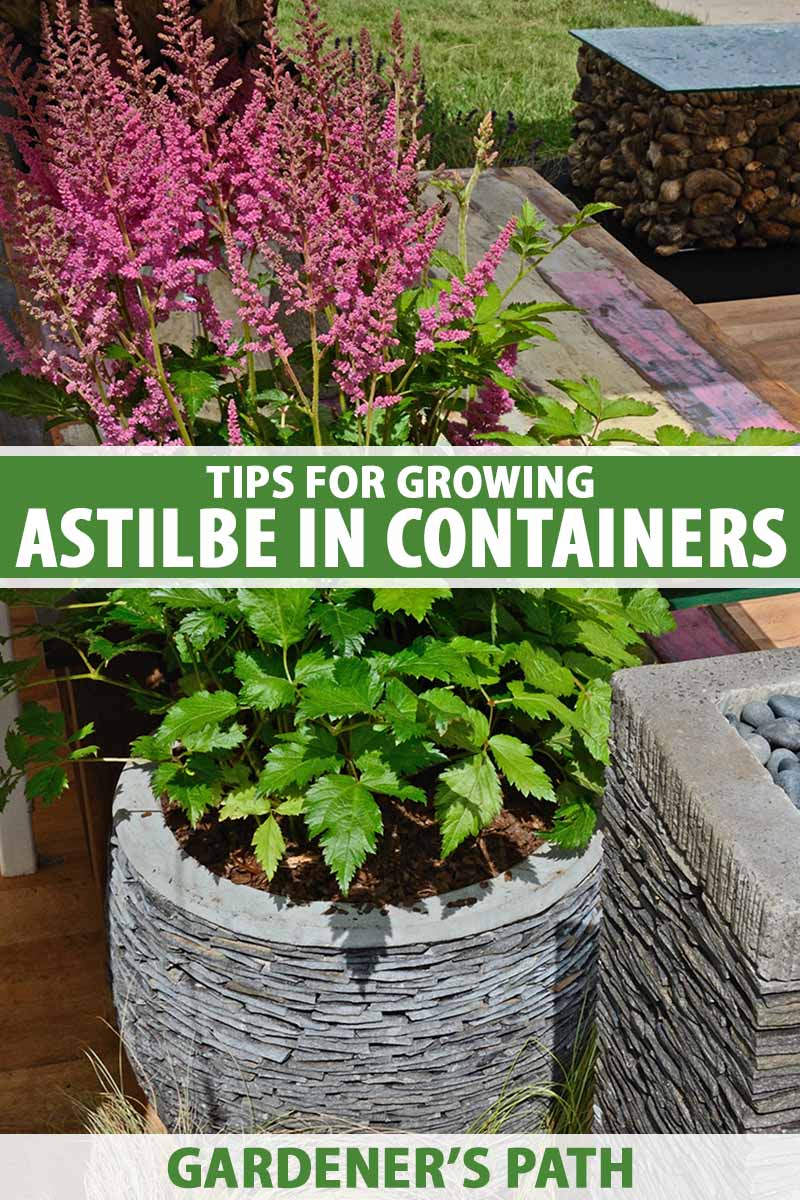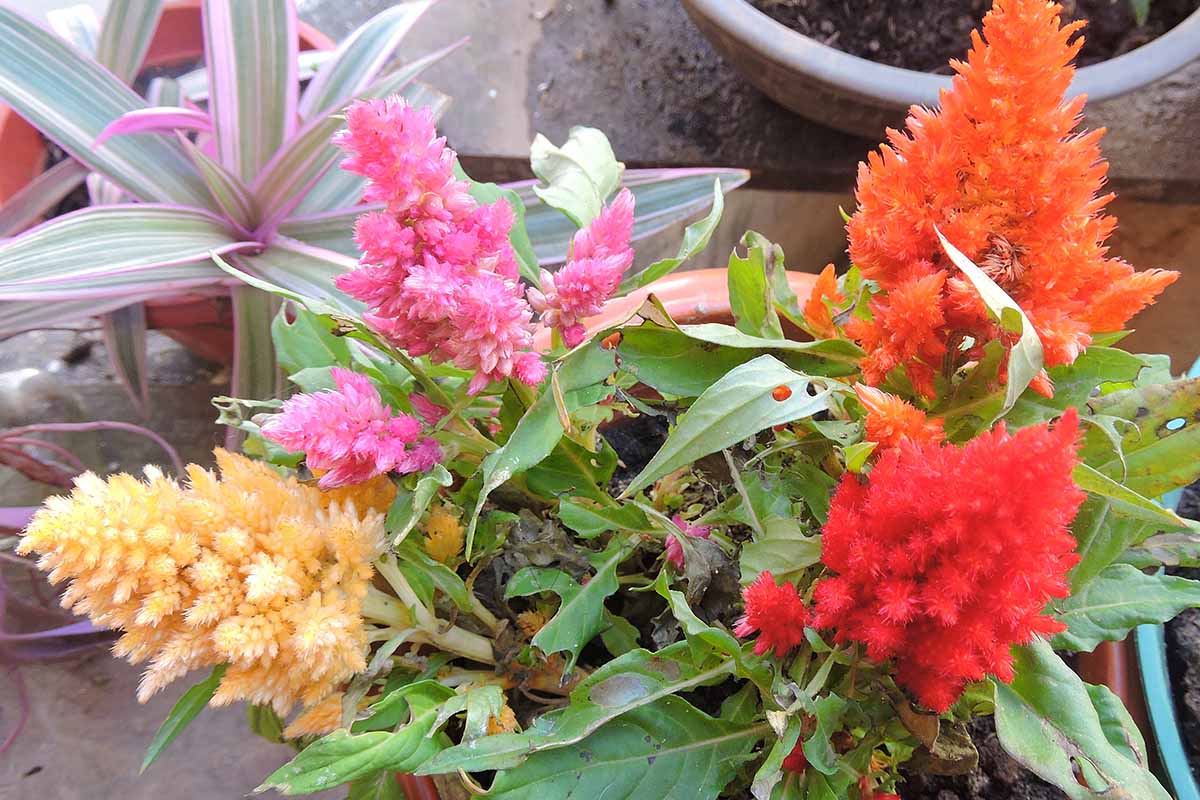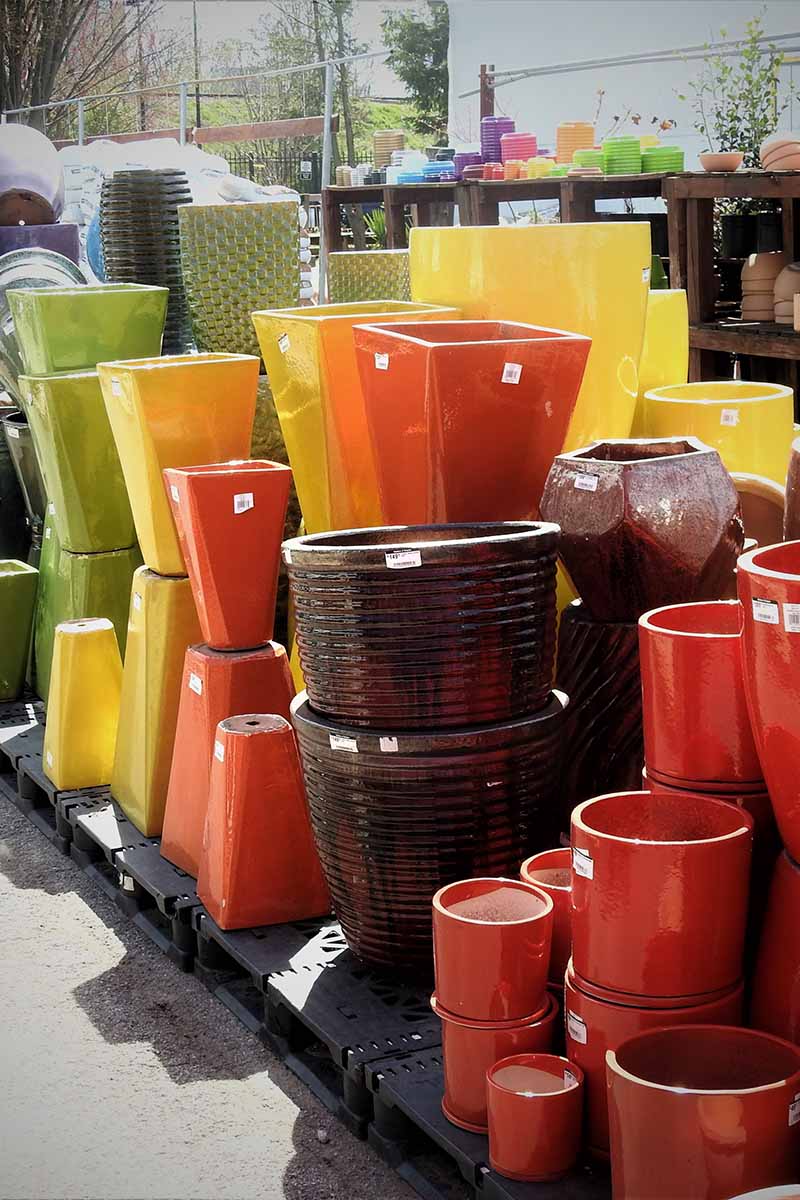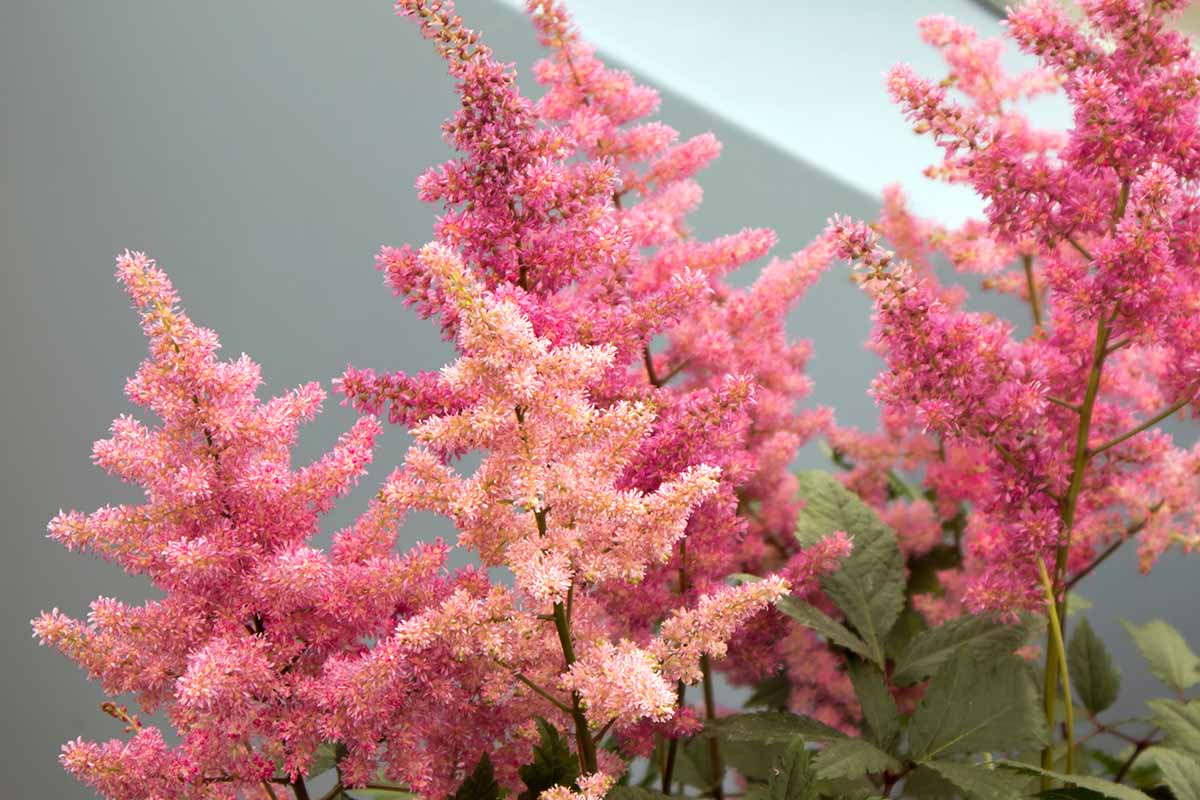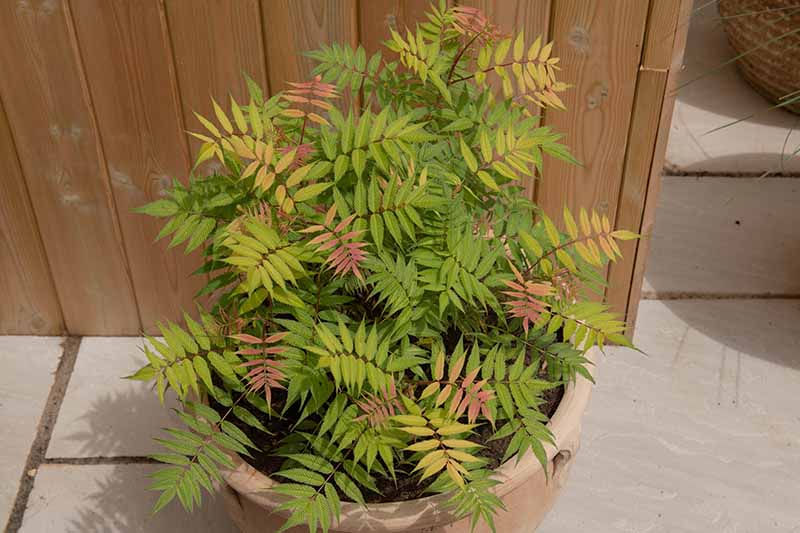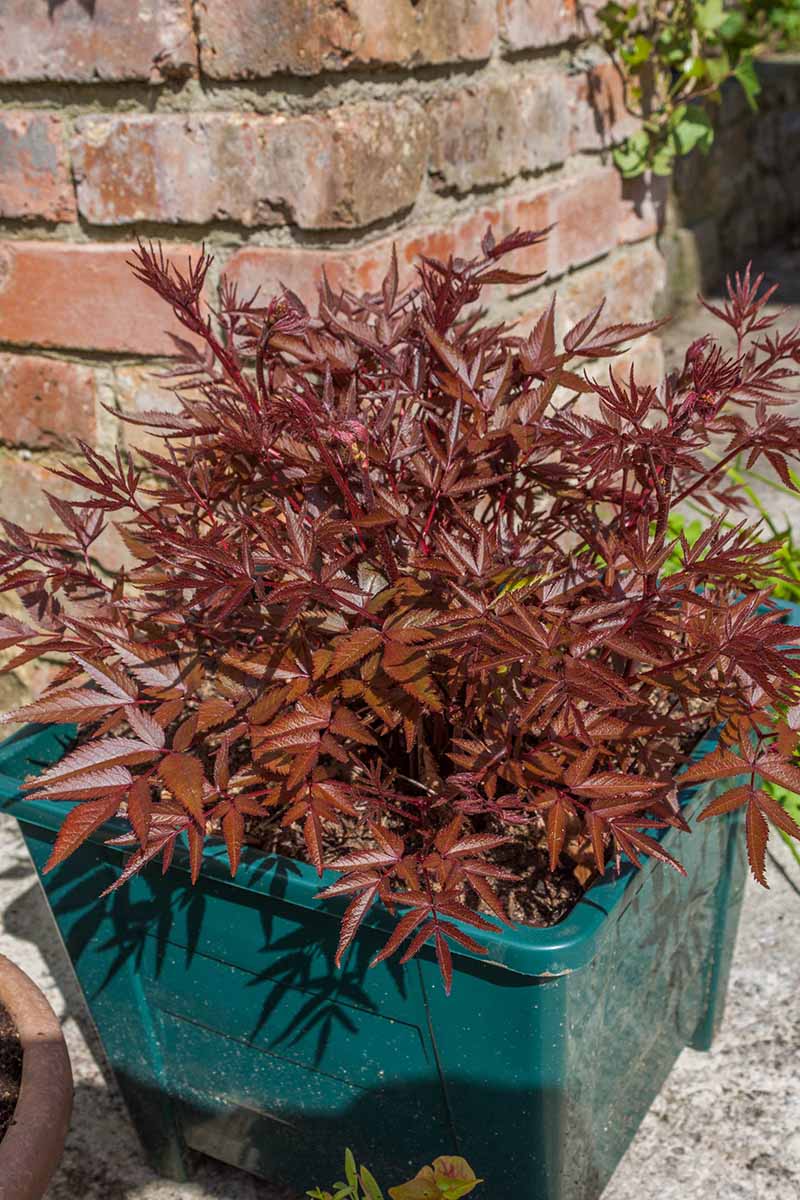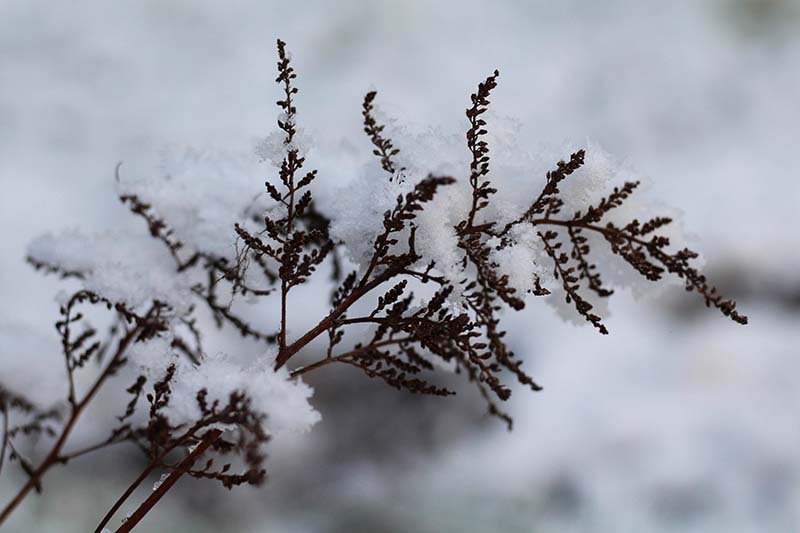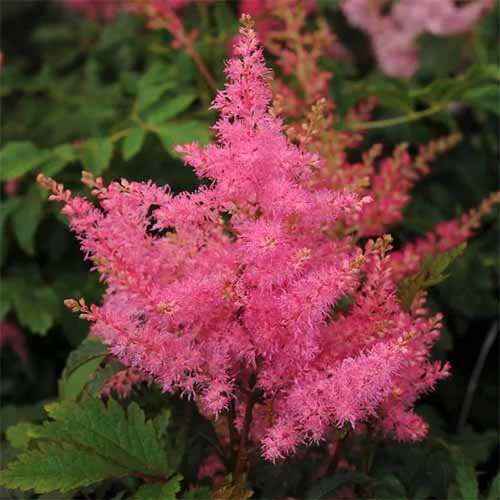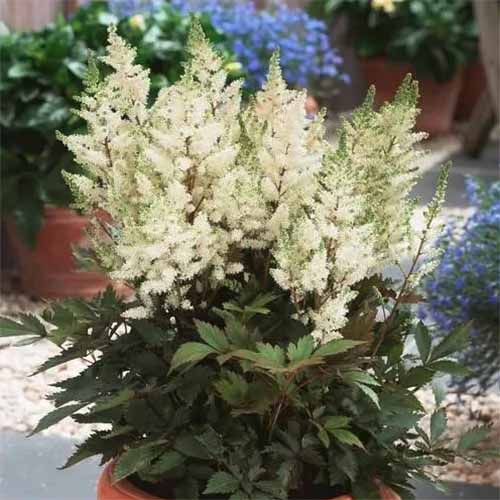You can easily grow them in containers to add a touch of color to a shady patio or deck. We link to vendors to help you find relevant products. If you buy from one of our links, we may earn a commission. And with beautiful yet subtle displays of showy flowers, these plants can transform a dreary corner or lonely back porch into a lively gathering spot. Potted astilbe can also be placed directly in a garden bed to add some depth. These hardy, easy-to-grow plants are well suited for containers. And since they are perennials, they should come back every year with proper care. With varieties ranging from six inches to a few feet in height, it’s easy to find one to fit your space. Read on to learn how to grow astilbe in containers.
Selecting a Container
The size of the container you need may vary based on the cultivar as well as how many plants you would like to grow in each pot. In general, choose a container that is at least sixteen inches wide and a foot deep per plant, or bigger if you are growing large cultivars or planting multiples. While any type of container should work, terra cotta or wooden planters are best as these materials tend to provide better air circulation than plastic or ceramic. This will also help to reduce the risk of root rot, ideal in shaded locations where moisture may evaporate slowly. Have fun when selecting your container, and choose something decorative for added interest. Whatever pot you select, just be sure it has holes in the bottom to allow water to drain and keep roots from becoming soggy. Adding a layer of gravel or small rocks at the bottom can help to improve drainage, though some gardeners advise against this.
Planting
Astilbe is best grown from divisions, live transplants, or dormant bare roots. You can easily dig up mature plants and divide the rhizomes to create new ones. Examine the rhizome, noticing where there are “eyes” with little shoots growing from them. Then divide it into chunks containing about three to five eyes each. Replant the divided sections in separate containers in a light, well-draining potting mix. Be sure the eyes and emerging shoots are facing upward and positioned about one inch below the soil line. Water thoroughly and keep moist until well established. Check out this article for more detailed instructions to propagate astilbe from divisions. To grow multiples in one container, space smaller varieties six inches apart, or plant larger ones with about a foot between each. Starts are also commonly available at nurseries, and these should be planted at the same depth as the container that they came in. Follow the same spacing, soil, and water requirements as described above for divisions. Many online nurseries also sell dormant bare roots. These tend to be cheaper than potted plants and are less susceptible to damage during shipping as well. A bare-root plant will look like what it sounds like: a dormant rhizome that has been removed from the soil. These often come wrapped in moist peat or newspaper. When handling bare roots, the most important thing is to make sure they never dry out. Open them up as soon as you receive them and add water if the roots appear dry. Plant immediately if possible, otherwise store them in moist peat, sawdust, or newspaper in a cool location like a cellar or the refrigerator. Plant them in your prepared container in a hole about twice as wide as the roots and about four to six inches deep, or deep enough so the tops are positioned about one inch below the soil line. Water well and keep them warm and moist until you begin to see new growth. It is also possible to grow astilbe in containers from seed, but bear in mind that germination can be finicky and it may be a few years before plants mature fully. If you do choose to propagate seed, sprinkle the seeds on the surface of the soil and press down gently. There’s no need to cover as light aids germination. Keep the soil moist and warm indoors until sprouts appear, which can take about a month. When the seedlings are a few inches tall, you can thin them to about eight inches apart. Wait until after the last frost to move the pots outside.
Maintenance
In general, astilbe are low-maintenance perennials. They grow well in full shade to part sun, depending on the variety. For container-grown plants, it is especially important to make sure they don’t completely dry out. Water about twice a week, or whenever the top inch of soil is dry. Add water slowly until it begins to seep from the drainage holes. In sunnier conditions, unglazed ceramic pots will dry out more quickly, so be attentive and plan to water more frequently if you need to in the summertime. Also note that although astilbe is very shade tolerant, plants will produce showier displays of flowers in brighter light. Removing spent flowers isn’t necessary as deadheading won’t help to produce new ones. You may choose to do so once blooms fade to showcase the attractive foliage, which should continue to thrive until fall frosts set in. Every few years, you will need to divide the rhizomes to keep plants healthy. Carefully remove the plants from the container and cut the rhizomes into several pieces as described above, making sure each one has at least three to five shoots growing from it. You can repot each of the clumps in separate containers, or if you have more than you need, you can plant some in the yard, give them as gifts, or compost the extras.
Overwintering
While this hardy perennial will survive winters in USDA Hardiness Zones 3 and above, container-grown plants are less insulated than those in the ground, and therefore run more of a risk of root damage from repeated cycles of freezing and thawing. A good rule of thumb to follow is to subtract one or two zones from your actual growing zone to plan for winter hardiness of potted plants. If your planter is large and you live in Zone 5 or above, or Zone 4 with a protected location for your planter, it will most likely be fine left outdoors through the winter. Smaller pots should be moved to a cool, dark place like a shed or unheated garage. There’s no need to water regularly during dormancy, but check every month or so and water if the soil is completely dry. Move the pots back outdoors in spring, gradually increasing exposure to the elements each day for a week or two to harden them off before setting the pot back in its permanent location. You may also choose to sink the plant, pot and all, into the ground for the winter so the roots will be better insulated. Cover with a few inches of mulch such as leaves, straw, or shredded bark. Remove the container in spring, as soon as the ground has thawed. In all zones and types of pots, ready the plants for winter dormancy by cutting back the foliage in late fall to about three inches above the soil line. Astilbe x ‘Verspink,’ a pink variety from the Younique series, is available in pots from Nature Hills Nursery. Younique Pink This is a disease-resistant compact cultivar featuring frilly bright pink flowers that bloom two weeks earlier than other astilbe varieties, and produce more flowers on each plant. The mature plants reach only about a foot in height, making them perfect for small spaces. Astilbe x ‘Verswhite’ is another compact cultivar from the Younique series that explodes with large, fluffy white, fragrant plumes, shooting straight up from the center of the fernlike foliage. New flowers emerge as old ones fade, providing a long season of color. Younique White Live plants in nursery containers can be purchased from Nature Hills Nursery. If you are looking for something bigger, Astilbe arendsii is a full-sized plant that will add dramatic color to a large garden box or planter in even the shadiest of corners. These plants grow to 40 inches tall and two feet wide. Astilbe arendsii Bare roots to grow a mix of large pink and purple flower plumes are available for purchase in packs of four or eight from Eden Brothers.
Lighten Up
Just because a back porch is shaded doesn’t mean it has to be dull and colorless. Why not put a pot or two of astilbe flowers in the corner and watch the space transform into a bright and welcoming oasis. With barely any maintenance required, this hardy perennial is perfect for even beginner gardeners. Have you grown astilbe in containers? We would love to see your photos in the comments below! And for more information about growing astilbe, check out these guides next:
How to Grow Astilbe Flowers: A Shade Gardener’s Best FriendAdd Color to Your Shade Garden with 15 of the Best Astilbe VarietiesHow to Winterize Astilbe Plants: 5 Easy Steps
